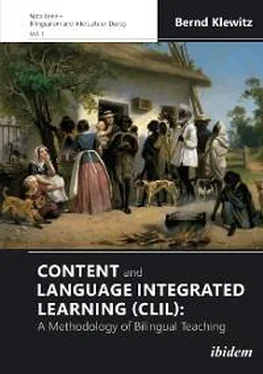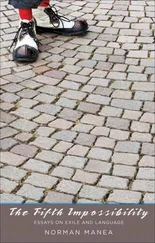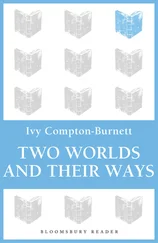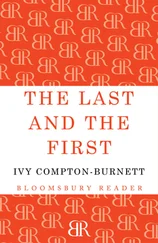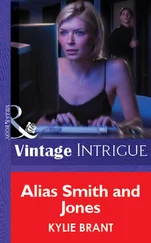In other words, humans have UG, a genetic propensity for language that is quite rich, but it need not be and, given our understanding of the evolution of the language faculty as of now as well as our general understanding of how genetics works, quite likely cannot be 100 % specific to language alone ( https://dlc.hypotheses.org/1269. Last viewed 03/05/2021).
Chomsky and colleagues—after 2002—have rejected certain assumptions of a “rich” UG and argued that the domain-specific faculty of language comprised only the property of recursion, as a linguistic property whereby phrases may be continuously embedded into other phrases:
Chomsky explains linguistic recursion as something that occurs when a grammatical sentence, which includes a noun or noun phrase and a verb, might or might not contain another sentence. In Chomsky's understanding, there is no upper bound, or outer limit, on how many sentences can be maintained within each other. In this understanding, recursion in language develops as we build increasingly long and complex sentences. … Chomsky has understood recursion in language to be indicative of the tremendous creativity of language. Since the number of embedded sentences is unbounded, there are multiple possibilities for human expression as occurring within recursion (Sterns: 2018 n.p.).
2.4 The Minimalist Position of Recursion
No longer arguing in favor of a rich UG, linguists from the Chomsky school now support a minimalist position purporting a lean version of the innate faculty of language, basically characterized by recursion. But particularly in the light of neuro-biological research findings even this reduced version of the UG is increasingly being questioned to a point that UG might not exist at all but would be part of the general cognitive human properties. Two misjudgments appear to be tenacious: that older people need more time to learn a foreign language and that they are best learned on the basis of grammar. Both are long-lived because, like Chomsky’s UG, they keep being repeated every so often. Developmental psychologist Michael Tomasello, for instance, claims that specific grammatical principles and constructions have not evolved biologically and cognitive scientist David Everett goes as far as maintaining that UG does not exist at all. To Everett the question is not whether humans can think recursively:
The question is whether this ability is linked specifically to language or instead to human cognitive accomplishments more generally (it could be connected to both, but that is less likely given what we know about the organization of the brain) … Recursionis not fundamental to human language but is rather a component of human cognition more generally… Language does not seem to be innate. There seems to be no narrow faculty of language nor any universal grammar. Language is ancient and emerges from general human intelligence, the need to build communities and cultures (Everett 2017: n.p.).
There is, however, still sympathy in the research community for the Chomsky school of thought. In his book The Language Instinct (1994), psychologist Steven Pinker argues that humans are born with an innate capacity for language. But instead of proposing a Universal Grammar he calls this faculty an “ instinct ” developed in biological evolution unique to humans. According to the Canadian scientist, this instinct was instrumental for communication among social hunter-gatherers and is comparable to other animal adaptations like those of spiders (web-weaving) or beavers (dam-building). As a mental module, this instinct represents specific structures in the human brain recognizing the general rules of other humans’ speech and in this confirms that “ Chomsky’s theory (at any time) has attracted a plurality of linguists, but never a majority, since there have always been rival theories … ” (Horgan 2016: n.p.):
The misconception that Chomsky represents the dominant view comes from the fact that the opposition is divided into many approaches and factions, so there’s no single figure that can be identified with an alternative. … Another problem with the claim that Chomsky’s theory of language “is being overturned” (as if it had ever been accepted, which is not true), is that it’s not clear what “Chomsky’s theory of language” refers to. He has proposed a succession of technical theories in syntax, and at the same time has made decades of informal remarks about language being innate, which have changed over the decades, and have never been precise enough to confirm or disconfirm. And it’s not so easy to say what “Universal Grammar” or an innate “language faculty” consists of; it’s necessarily abstract, since the details of any particular language, like Japanese or English, are uncontroversially learned (ibid.).
Further insights into the properties of L1 development, taken up by Pinker and related to in the Guide for Bilingual Parents(Meisel 2019), allegedly confirmed three relevant findings: (1) that L1 acquisition is always successful, (2) that it happens at first rate, (3) that in L1 grammatical development is uniform and children proceed through identical developmental phases (cf. Meisel: 33). The explanation seems like a resurgence of Chomskyan thought and maintains that children are equipped with—what Meisel calls—a Language Making Capacity(LMC; see above) guiding linguistic development. This innate LMC
does not relate to specific languages but contains principles and mechanisms enabling children to whatever language they are exposed to. The LMC is genetically encoded and species-specific, i.e. only humans possess a faculty for language. It is innate, meaning that children are endowed with it at birth, although initially they cannot make full use of it, either because they are cognitively not yet ready or because parts of the LMC only become accessible in the course of development (ibid.: 34).
Similar to the older UG version but also in accordance with Pinker’s theories, the LMC is supposed to be genetically encoded and innate, and as part of nativist positions it means that children inherit this capacity at birth—or in the words of the Guide for Bilingual Parents“ LMC is an endowment for bilingual children ” (ibid.: 44, 47). The assumption that all children share a common language acquisition mechanism also describes the milestones of L1 development as language perception, comprehension and production (cf. ibid.: 37, 40). Whether this can also be applied to L2 learning is a different discussion and needs to be considered separately, mainly in the context research about L1-L2 divergence and the Fundamental Difference Hypothesis( FDH,see chapter 3). The focus here is on the acquisition of mental grammars, because grammar is considered the core component of linguistic competence (cf. Meisel: 30). Following this position, the consequences for language instruction are fairly obvious: no (formal) teaching would be required, neither any corrective feedback from parents:
… many parents try to foster children’s linguistic development by correcting their grammatical errors. It seems, however, that this has little effect on acquisition processes—these children do not fare better than those whose parents do not correct them. … they should know that language acquisition succeeds equally well without this kind of support (ibid.: 31).
In sum, the LMC position insinuates that for learning a language (and at that also foreign languages) no particular instruction is needed and best results are to be expected from immersion situations and programs. The further development of teaching strategies, however, has meanwhile acknowledged the differences between the acquisition of a mother tongue and foreign language learning, epitomized in the revision of the UG as a minimalist program—still as a rejection of behaviorist beliefs. In this context the FDH was established as a means to overcome fundamental criticism of the UG proposition and allow for different language development of children, adolescents and adults—with a growing need for effective instruction and more conscious learning. Details of the FDH will be discussed in the following juxtaposition of nature-versus-nurture in the next chapter (chapter 3).
Читать дальше
